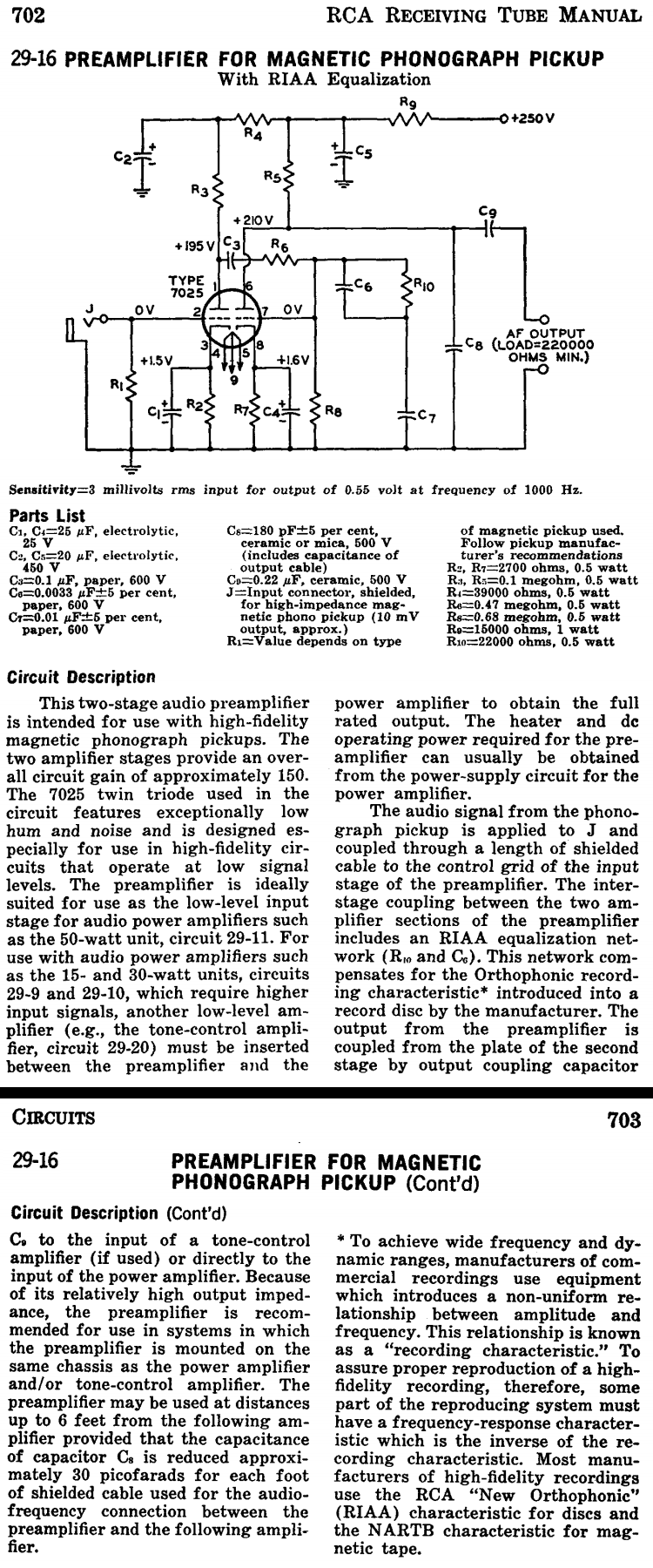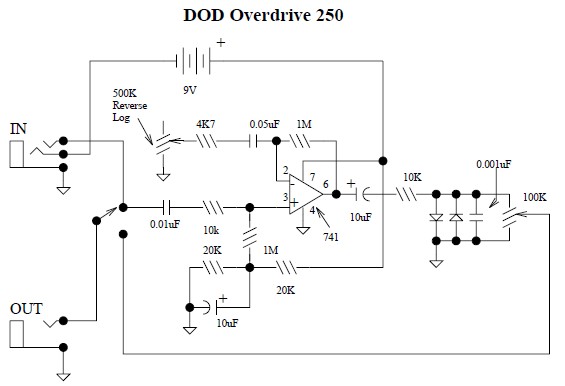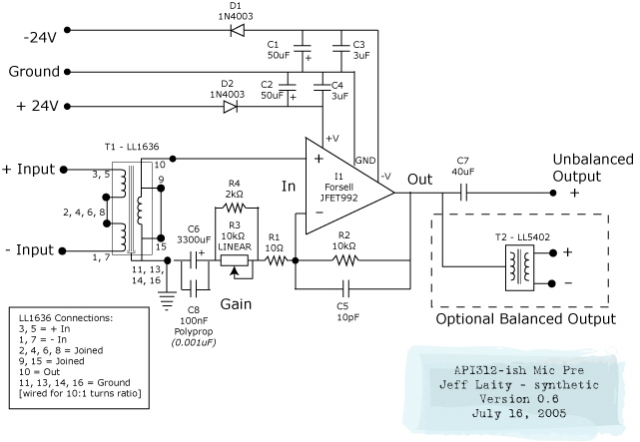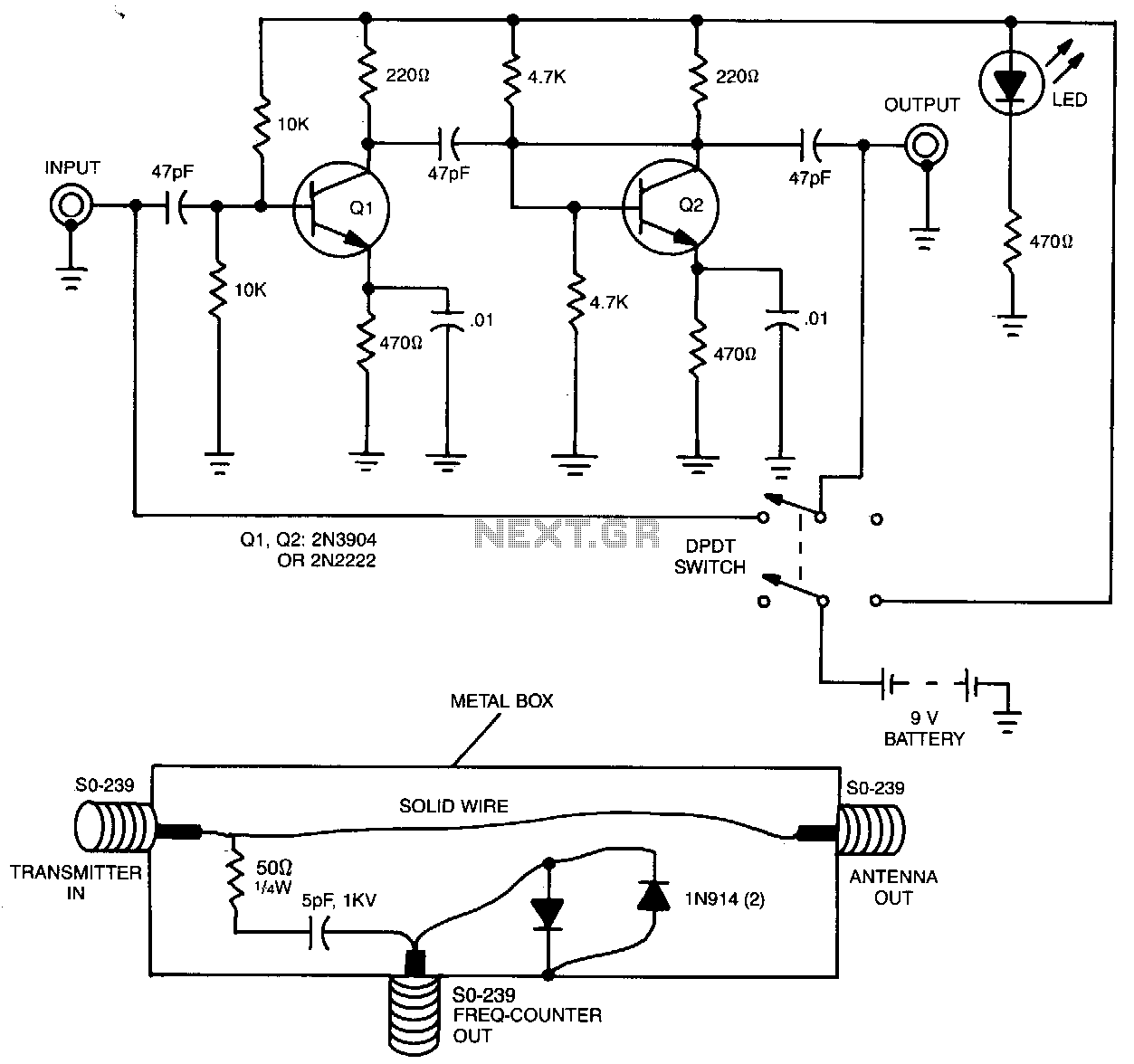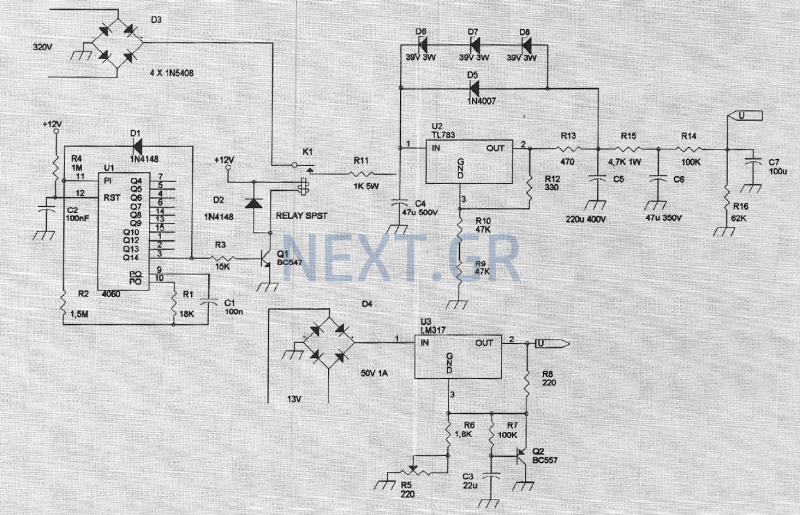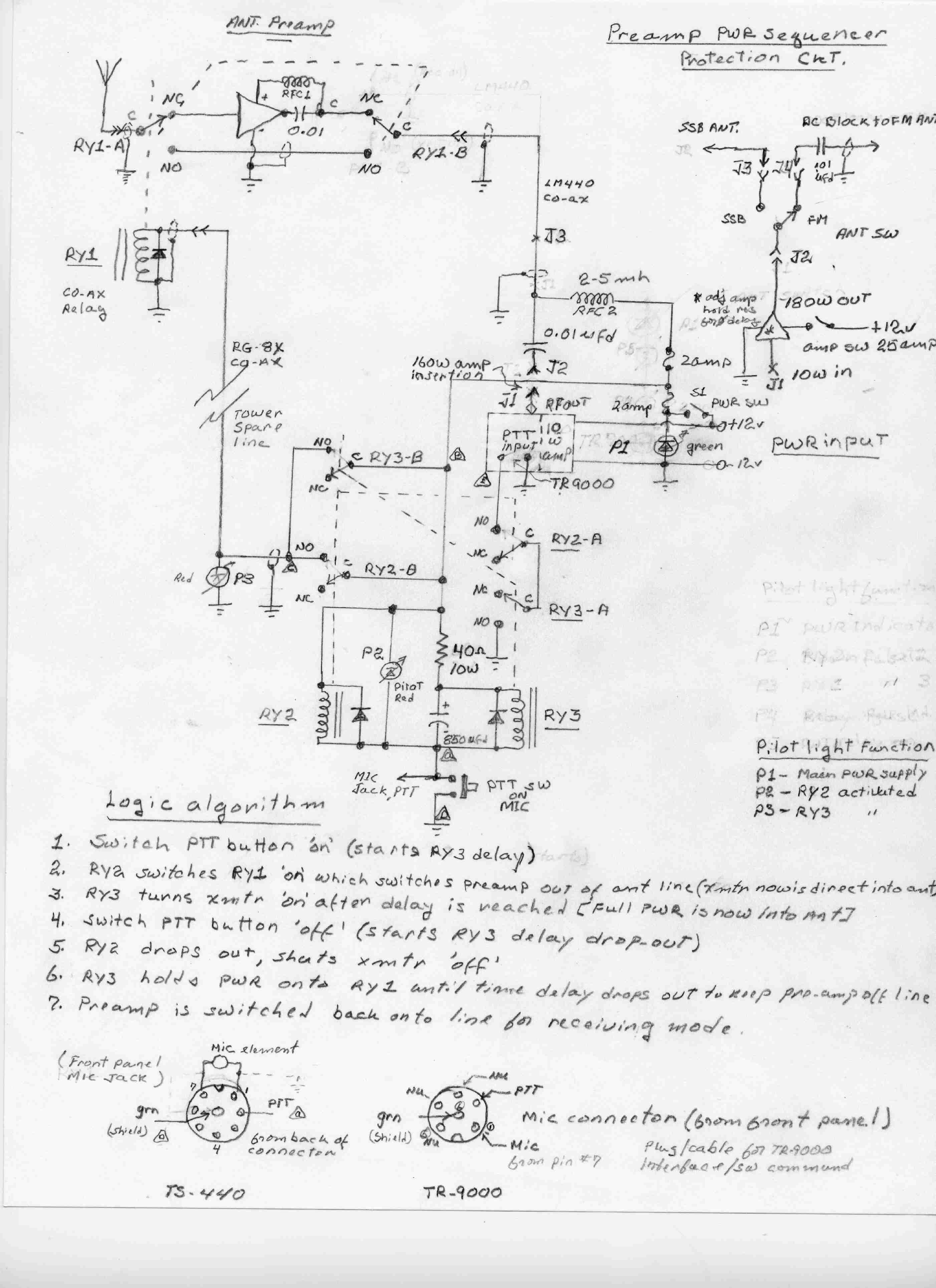
Soundblaster Preamp
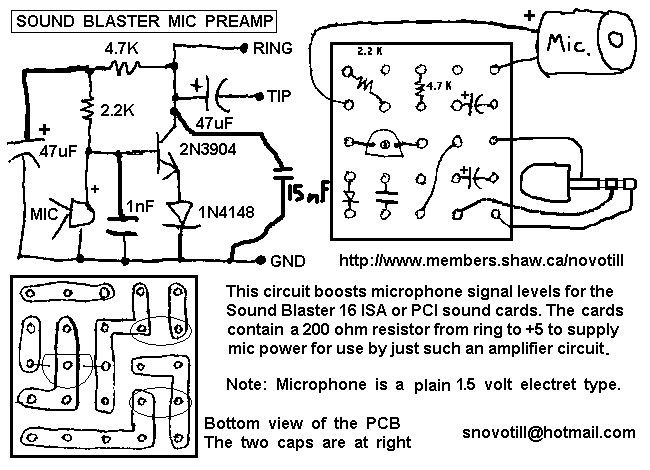
The Sound Blaster 16 PCI and Sound Blaster 16 ISA do not have a very sensitive microphone input. This little one transistor amplifier is powered directly from the microphone jack on the sound card and has LOTS of gain. Just put a 100uF bypass capacitor in parallel with the diode to increase gain even more. More: Note that sound cards other than those mentioned above might not supply the correct power to run this amplifier.
The circuit described involves a simple one-transistor amplifier designed to enhance the microphone input sensitivity of the Sound Blaster 16 series sound cards. The amplifier is powered directly from the microphone jack, allowing it to utilize the existing voltage supplied by the sound card. This configuration is particularly beneficial for applications where the microphone's output signal is weak and requires amplification for optimal performance.
The transistor used in this circuit acts as a common-emitter amplifier, providing significant voltage gain. The gain can be further increased by adding a bypass capacitor, such as a 100µF capacitor, in parallel with the diode that is part of the circuit. This capacitor serves to stabilize the power supply to the transistor, reducing noise and improving the overall performance of the amplifier.
It is crucial to note that this amplifier circuit is designed specifically for the Sound Blaster 16 PCI and ISA sound cards. Other sound cards may not provide the appropriate voltage levels necessary for the proper functioning of this amplifier. Therefore, careful consideration should be given to the specifications of the sound card being used to ensure compatibility.
In summary, this one-transistor amplifier circuit is a practical solution for enhancing microphone input sensitivity on specific sound cards. Its simplicity and effectiveness make it an attractive option for users seeking to improve audio capture in their applications.The Sound Blaster 16 PCI and Sound Blaster 16 ISA do not have a very sensitive microphone input. This little one transistor amplifier is powered directly from the microphone jack on the sound card and has LOTS of gain. Just put a 100uF bypass capacitor in parallel with the diode to increase gain even more. Note that sound cards other than those mentioned above might not supply the correct power to run this amplifier. 🔗 External reference
The circuit described involves a simple one-transistor amplifier designed to enhance the microphone input sensitivity of the Sound Blaster 16 series sound cards. The amplifier is powered directly from the microphone jack, allowing it to utilize the existing voltage supplied by the sound card. This configuration is particularly beneficial for applications where the microphone's output signal is weak and requires amplification for optimal performance.
The transistor used in this circuit acts as a common-emitter amplifier, providing significant voltage gain. The gain can be further increased by adding a bypass capacitor, such as a 100µF capacitor, in parallel with the diode that is part of the circuit. This capacitor serves to stabilize the power supply to the transistor, reducing noise and improving the overall performance of the amplifier.
It is crucial to note that this amplifier circuit is designed specifically for the Sound Blaster 16 PCI and ISA sound cards. Other sound cards may not provide the appropriate voltage levels necessary for the proper functioning of this amplifier. Therefore, careful consideration should be given to the specifications of the sound card being used to ensure compatibility.
In summary, this one-transistor amplifier circuit is a practical solution for enhancing microphone input sensitivity on specific sound cards. Its simplicity and effectiveness make it an attractive option for users seeking to improve audio capture in their applications.The Sound Blaster 16 PCI and Sound Blaster 16 ISA do not have a very sensitive microphone input. This little one transistor amplifier is powered directly from the microphone jack on the sound card and has LOTS of gain. Just put a 100uF bypass capacitor in parallel with the diode to increase gain even more. Note that sound cards other than those mentioned above might not supply the correct power to run this amplifier. 🔗 External reference
